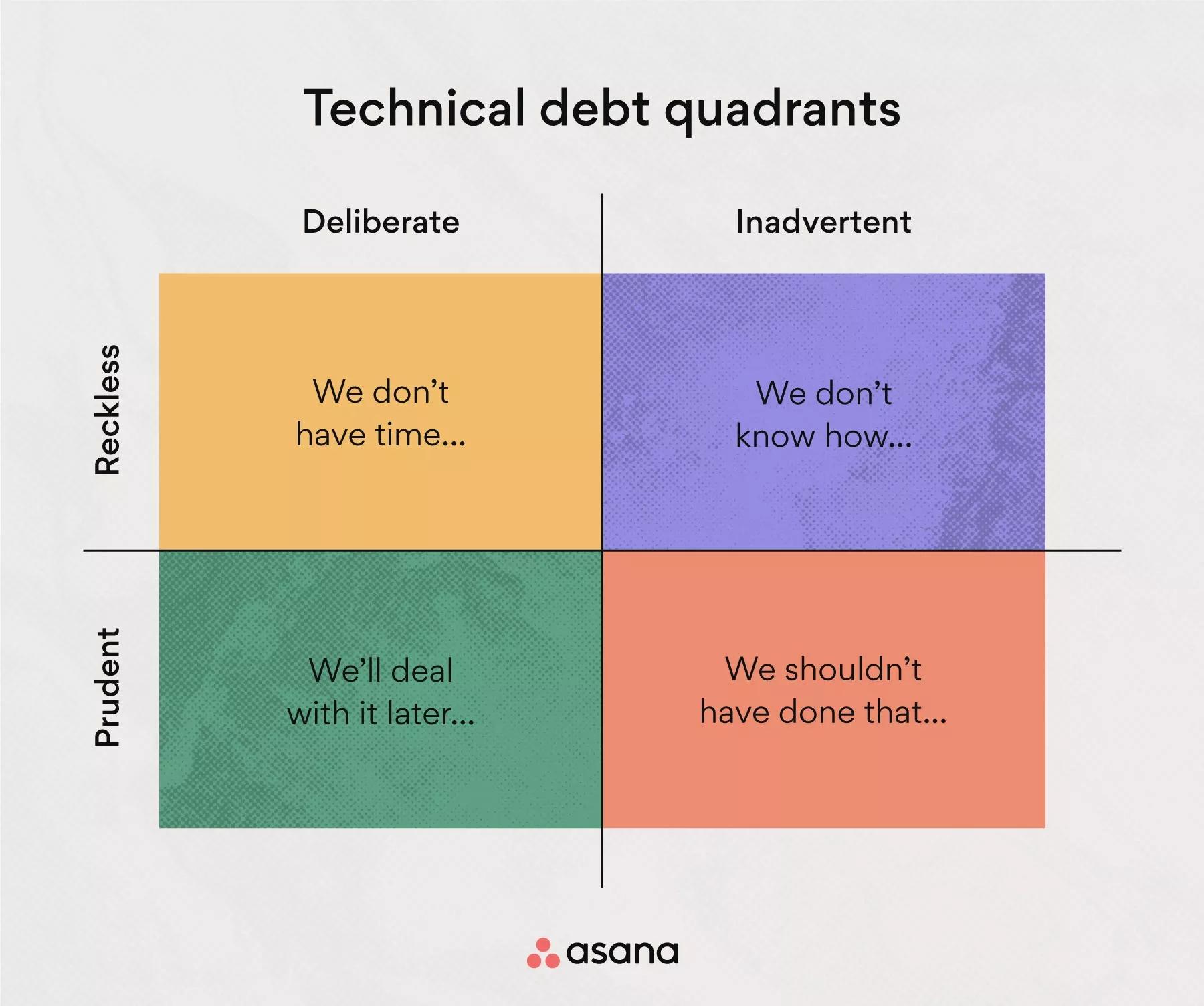Hey there! Ever heard of technical debt? It’s not about money or interest rates. It’s more like the little shortcuts we take when building software or systems. Imagine you’re developing a new product, and you’re excited to get it out to customers quickly. So, you build a quick prototype, and boom, it’s out there! But here’s the catch: you didn’t do all the optimal things, like adding alarms, logging, and metrics.
Sure, the feature works fine from the customer’s perspective, and the business seems happy, but from a developer’s perspective, it’s like flying blind! You know there are things you should have done to make it better, but now it’s hard to maintain. That’s technical debt for you!
It’s like you borrowed some time upfront, but now you have to pay it back with interest. If you don’t address it soon, more debt will pile up, and eventually, you’ll find yourself in a mess. So, understanding and managing technical debt is crucial!

Now you might be wondering, “How do I avoid technical debt, and how do I deal with it once it’s there?” Great questions! Let’s explore more about technical debt and how you can tackle it effectively.
You got it! Technical debt is all about those suboptimal shortcuts that come back to haunt us later. It’s like leaving little messes behind for your future self to clean up. Not fun, right? But don’t worry, I’ve got some solutions for you!
Too many tabs? Here is a super simple way to Stay Organized in Chrome
First things first, we need to raise awareness about technical debt. Knowing its impact is the first step to preventing it. So, let’s educate ourselves and others about its consequences.
The second key is to have the courage to stand up for what’s right. As developers, we need to push back when we’re asked to build things in a hurry without considering the long-term consequences. Sure, we want to get to market quickly, but rushing can lead to more headaches down the road. So, let’s have some backbone and advocate for building things the right way!
Of course, there are times when tight deadlines are crucial and technical debt might be unavoidable. But remember, prevention is better than cure. So, let’s invest that extra effort upfront to build solid and stable systems, saving ourselves from the pain of dealing with technical debt later on.
And guess what? When we prioritise quality over shortcuts, we end up with a more maintainable and efficient system. That means adding new features or making modifications becomes a breeze, and we can deliver better products to our customers.

So, let’s team up, fellow developers, and work towards a future with less technical debt and more innovative solutions! Together, we can build robust and reliable software that stands the test of time. Let’s tackle technical debt head-on and make our coding lives easier!
So, those are my two biggest suggestions for prevention, and we’ve talked about how to prevent them. Hopefully, if you’re in a good situation, you can prevent technical debt from entering the system. However, all systems have some amount of technical debt. The world isn’t perfect, and we can’t push back 100 percent of the time, so probably 99 percent of the time, you’re going to have to deal with technical debt.
Now, how do you fix it? The first way is to allocate time to refactor and fix the problems. A lot of people don’t like hearing this, but you know, you’ve got to clean up the mess that you make, unfortunately. If you take shortcuts that lead to all these problems in the future, you’ve got to clean it up. Unfortunately, a lot of the time, that’s going to go into fixing this problem that resulted from technical debt, which could have been avoided from the get-go by just not doing it in the first place.
Now, unfortunately, this is going to take a lot of time. Dealing with technical debt is never easy, especially as you accrue more and more. And this is a point that I really want to hammer home: the more technical debt you have as a sum, the harder it gets to deal with the problem. So, just a little bit of technical debt is fine—a small amount that’s manageable. But as soon as it starts taking over the system, as soon as it becomes an element of the system, and your technical debt is how the system works, then you really have a problem, and you need to address that quickly.
Now, like I said, one way is to refactor and make time. You know you’re going to have to swallow the pain that goes along with that. The other way is to rebuild the system, and for a lot of folks, that is just out of the question because the amount of time that you need to spend just to get to parity to rebuild the system is incredibly prohibitive. So, it makes a lot of sense to just deal with the technical debt when the time comes, when time gets allocated for it.

I think what you’ll find is that if you don’t end up dealing with this technical debt, you’ll become so crippled in the sense of the speed at which you can deliver new features or make modifications to your existing system that you just won’t be able to move. You’ll be in a deadlock, essentially. So, again, I highly encourage you to deal with your technical debt as it arises. Try to prevent it, of course, from getting there in the first place. But again, if you have no choice, the technical debt’s already there; you’ve got to deal with it.
